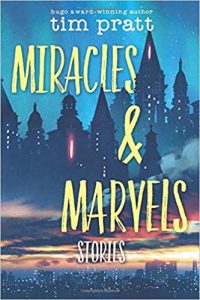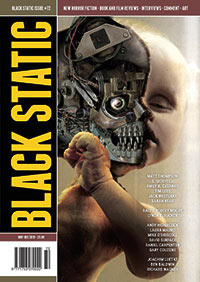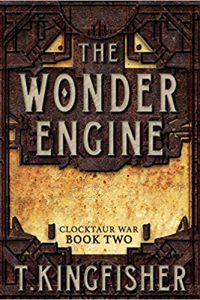Graham Sleight’s Yesterday’s Tomorrows: Harry Harrison
There are, I’d suggest, two canonical SF novels about overpopulation. One, John Brunner’s Stand on Zanzibar (1968), is a vast, sprawling work whose encompassing rage is not nearly well known enough outside the SF field. The other, Harry Harrison’s Make Room! Make Room! is well known, but mainly through its film incarnation as Soylent Green (1973). The novel itself is very different. Set in New York of 1999, it follows Andrew Rusch, a policeman trying to solve a murder during an especially blazing summer. Harrison manages the fine balance between telling his story and exposition about the causes and the consequences of the overcrowding. A lot of the exposition comes in dialogue, as for instance when one character explains to Andy where a new foodstuff comes from:
I know you never open a book – but don’t you ever watch TV? They had an hour program on the thing. A conversion of an atomic submarine, cruises along and sucks in plankton, all the microscopic sea things that you will be very surprised to find out the mighty whales live on. All three whales that’re left. The smallest life forms supporting the biggest, there’s a moral there someplace. Anyway – the plankton gets sucked in and hits a sieve and the water gets spit out and the plankton gets pressed into little dry bricks and stored in the sub until it is full up and can come back and unload. Then they futz around with the bricks of plankton and come up with ener-G.
There’s a dry matter-of-fact-ness there which might almost be the novel’s dominant tone. Harrison’s own prose sits well with this: direct, unflowery, but carrying occasional flashes of wit. As you’d expect in a story about overpopulation, some time is spent exploring how things got this bad – through life-prolonging medical advances, for instance. But far more time is spent on the question of how humanity copes in this world. It’s made clear at various points that the pressure of so many people is close to causing society to break down, and violence and looting are regular occurrences in the book. This is one reason why making the protagonist a police officer has a kind of rightness to it: the police are, after all, concerned with trying to hold society together or at least stop transgressions against its rules. Andy and his colleagues are fighting a losing battle, and there’s no sign that things will get any better.
If I had to pick one word to describe Make Room! Make Room!, it’d be clamorous. It’s an astonishingly noisy book, as the title hints, everyone attempting to be heard against the background of everyone else. New York is a frenetic enough city as it is, and Harrison is inviting us to see how much worse it might be. At the end of the book, Andy sees in the new year and the new millennium in Times Square. The President gives a speech on vast screens there, but neither his words nor the celebratory music can be heard. After midnight, Andy tries to calm an overexcited reveller who believes that Armageddon will now come. ‘‘Maybe you have the wrong century,’’ Andy says, ‘‘it’s after midnight, the new century has begun, and nothing has changed.’’ There is no magic here to whisk anyone out of the noise.
What’s surprising about Make Room! Make Room! is how contemporary its concerns are. Again and again, Harrison makes the link between overpopulation and the depletion of natural resources. Even if New York in 1999 didn’t have the 35 million inhabitants he imagines, there are plenty of cities in the world where some of the things he describes are coming true. In a new afterword to the 2008 UK edition of the book, Harrison acknowledges that some of his detailed predictions were wrong, but goes on to say with justification that ‘‘the population details, food shortages, and oil consumption I wrote about have proven to be too horribly correct.’’ The achievement of Make Room! Make Room! is that it sets out how dire the situation could be without ever seeming didactic.
Harrison’s body of work is astonishingly various, and picking out a few representative books is an even more difficult job than for most authors. He emerged from the stable of writers around John W. Campbell’s Astounding, and has acknowledged his debt to Campbell. But, as Make Room! Make Room! demonstrates, he was always a long way from the Campbellian view that problems could be fixed by sufficient application of smarts and effort. Indeed, Bill, the Galactic Hero (1965) is, among other things, a sharp satire of that most central of Campbell authors, Robert Heinlein. A Transatlantic Tunnel, Hurrah! (1972) is an exuberant alternate-world fantasy which lets Harrison the satirist off the leash. But perhaps the best works to examine next are the sequence of books known as the Deathworld Trilogy. The original Deathworld was Harrison’s first novel, and the Deathworld stories are as fine an example as you could wish for of straightforward Campbellian action adventures. Their protagonist, Jason dinAlt, finds himself exploring successive worlds whose lifeforms are inimical to human life:
Real as they had been, the training chambers had not prepared him for the surface of Pyrrus. There was the basic similarity, of course. The feel of the poison grass underfoot and the erratic flight of a stingwing in the last instant before Grif blasted it. But these were scarcely noticeable in the crash of the elements around him.
The next couple of paragraphs go on to explain that the rain and wind are tearing into dinAlt, that there are volcanoes ‘‘vomiting out clouds of smoke and flame’’, not to mention the fall of hailstones as big as his thumb. When even the grass is trying to kill you, ‘‘Deathworld’’ doesn’t seem an inappropriate title.
The narrative of each book is Campbellian to the core: Jason observes, figures out, acts. (The books also use that staple Campbell trope, psi powers.) Jason doesn’t always win simply or cleanly, and sometimes has to learn to compromise. But there’s a clarity to the books’ narrative drive that’s very compelling. They pack an enormous amount of action into relatively brief spans – about 150 pages each. And Harrison’s prose is a model of clarity and swiftness. Deathworld may be pulp, but it’s very high-grade pulp.
Harrison’s most famous series is undoubtedly the adventures of the Stainless Steel Rat. The Adventures of the Stainless Steel Rat includes the first three books: The Stainless Steel Rat (1961), The Stainless Steel Rat’s Revenge (1970), and The Stainless Steel Rat Saves The World (1972). The rat of the title is the lovable rogue Slippery Jim, aka James diGriz, a conman who gets lines like ‘‘It is hard to curl your lips with contempt and talk at the same time, but I succeeded.’’ He first appears in a memorable set-piece: a police robot comes to arrest him and, just as the robot gets to the word ‘‘charge’’, diGriz detonates explosives dropping a three-ton safe on him. As diGriz makes his escape, the robot is still vainly reciting the indictment from under the safe.
So diGriz is in trouble from the word go, and that’s how the books continue, following him as he ricochets from one scam to another. His goal is, of course, personal enrichment, and his skill is that he’s simply smarter than anyone else around. His enemies are boredom and officialdom. He also – unlike any of the other Harrison protagonists in these books – narrates his own story with a winning directness. In the process, he also winds up squashing quite a few SF cliches like the Asimovian robot in the opening scene. As with Terry Pratchett’s works, the more you know about the field these books are satirising, the more pleasure you will get from their mockery.
Yet diGriz is not an amoral hero. (Though he’s on the other side of the law, his laconic confidence is reminiscent of Vimes in Pratchett’s Guards books.) In the last of the books collected here, he does indeed save the world after a fashion. Above all, though, the Rat books are a triumph of tone. In them, Harrison found exactly the right voice to tell a certain kind of story. That tone has its descendants in SF now, not just in writers like Pratchett who are pegged as ‘‘humorous’’ but in the work of Charles Stross or Bruce Sterling. SF often tries to ally readers with the smartest person in the room, and the Rat books are among the first and best examples of this. It’s a real shock to find out that the same person wrote both these and Make Room! Make Room!
The sense that Harrison was willing to try anything is evident in the sequence beginning with West of Eden. It’s very consciously and deliberately an epic, set in an alternate world where humans and dinosaurs struggle for dominance. In addition to the dinosaurs we know of, there are also intelligent descendants of those reptiles in the picture. Even more than Make Room! Make Room!, it’s a book that serves as a working-out of a culture. Its techniques for doing that are shared with works like Dune. Both feature young protagonists (here, the hunter Kerrick) who can wander through the world observing and learning just as the reader does. Both coin new words to describe new concepts, but also create through analogy. Here’s an example:
Slowly [Kerrick] began to see through the apparent disorder of Alpèasak to the natural order and controls that ruled everything. If he had been of an introspective turn of mind, he might have compared the movement of the Yilanè in their city to that of the ants in their own cities beneath the ground. Apparently a senseless scurrying, but in reality a division of labor with workers gathering food, nurses tending the young, armored and clawed guards preventing invasions – and at the heart of it all the queen producing the endless stream of life that guaranteed the ant city’s existence. Not an exact analogy, but a close one that he never even considered. But he was just a boy, adapting to extraordinary circumstance.
If that sounds alarmingly didactic, then it should be counterbalanced with the knowledge that Harrison can convey easier pleasures too. The idea of humans and dinosaurs roaming the same planet appeals to many peoples’ inner eight-year-old, and Harrison clearly knows this. He is also especially strong on describing the hardships of the humans’ life: what cold feels like when you can’t escape it, how thrilling the hunt can be. In subsequent books in this series, he spent more time exploring this world. For him and the reader, it’s certainly worth the effort.
*
All the Harrison works I’ve discussed above start from simple premises: what if the world was hugely overcrowded? What if there were planets whose life was totally hostile to humans? And so on. But what strikes me in reading them is how Harrison never stints on the detail of their working-out. West of Eden has a 20-page appendix on the physiology and history of his alternate saurian culture, but it’s only the endpoint of the approach he has pursued throughout his career. It’s the same sensibility that conceived making ener-G from plankton collected by nuclear submarines. What varies from book to book is the tone, but Harrison’s wit is never far from the surface. In general, funny writers are valued less than serious ones, which perhaps accounts for my sense that Harrison isn’t understood or read as fully as he might be by the SF community. But a view of Harrison that only takes in the Stainless Steel Rat books is, as I hope I’ve demonstrated, pretty limited. Like all great SF writers, he never stops surprising you.









Pingback:Tweets that mention Locus Online Reviews » Graham Sleight’s Yesterday’s Tomorrows: Harry Harrison -- Topsy.com
How pleasing to see the man remembered so well — still surviving. His early work was a delight to read. He was great fun to meet and, as you say, he is worthy of wider recognition. Except. . . Except I am not so sure he travels well in time. I suspect younger readers with contemporary sensibilities would not understand the wit and find the writing style thin. Harry tended to be pithy whereas most modern books are written in a more dense prose.
I confess to have stopped reading him after the Eden series which I found disappointing. My favourite is probably Montezuma’s Revenge.
Pingback: Graham Sleight’s Yesterday’s Tomorrows: Harry Harrison – Locus Online by Restaurants Online USA